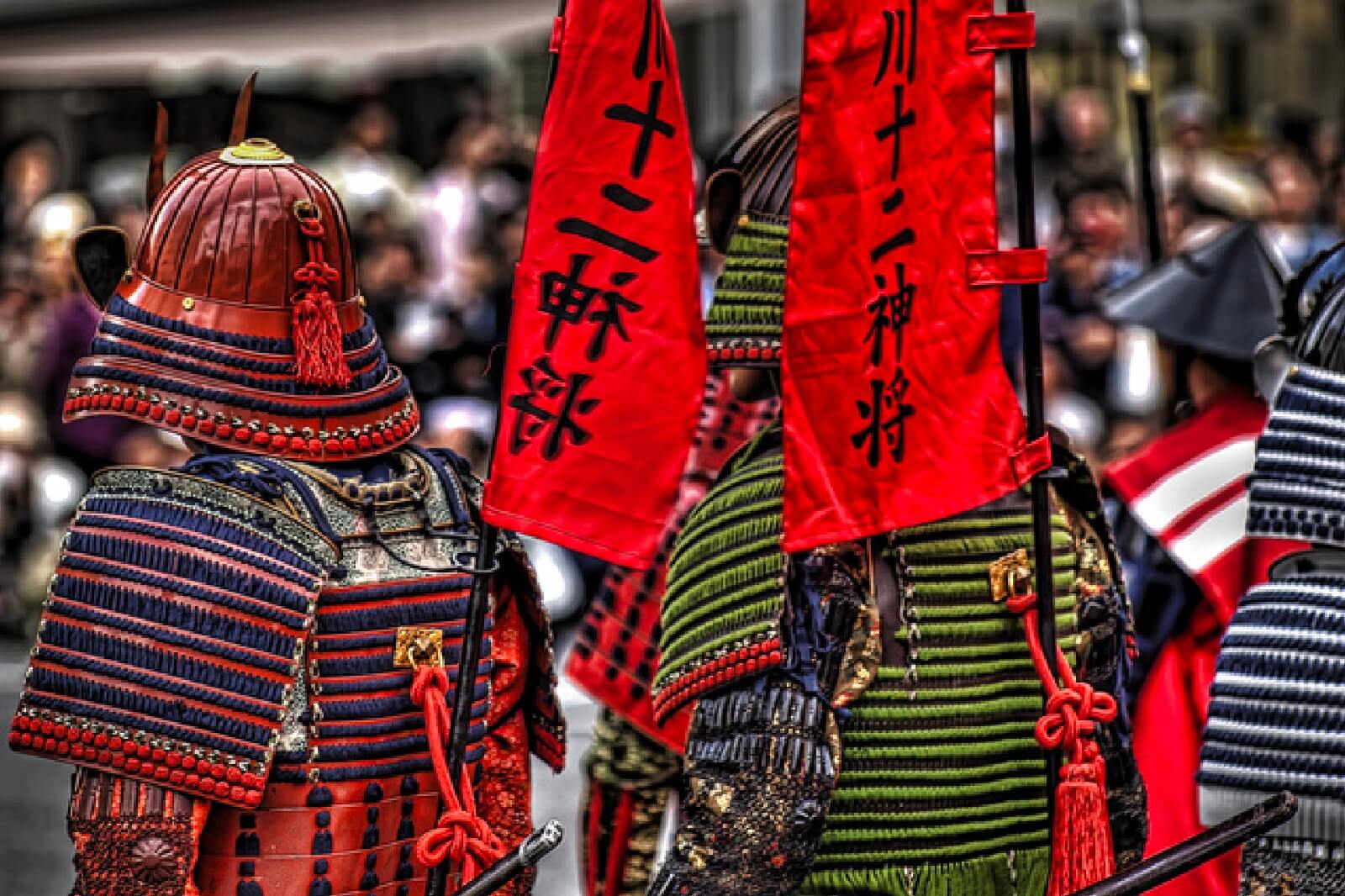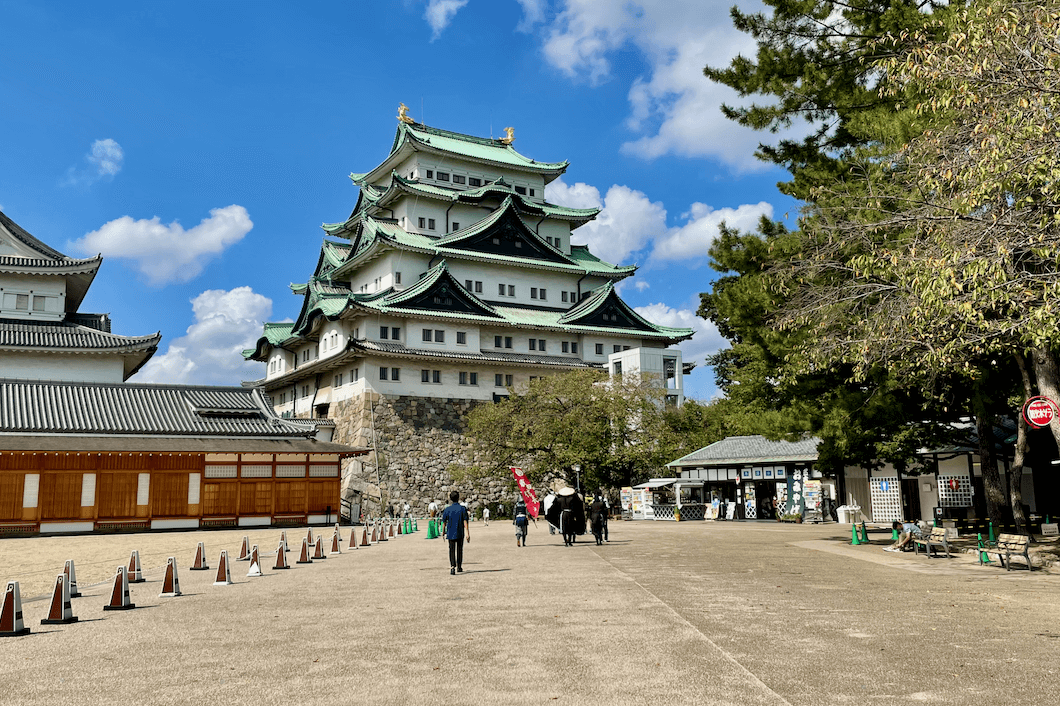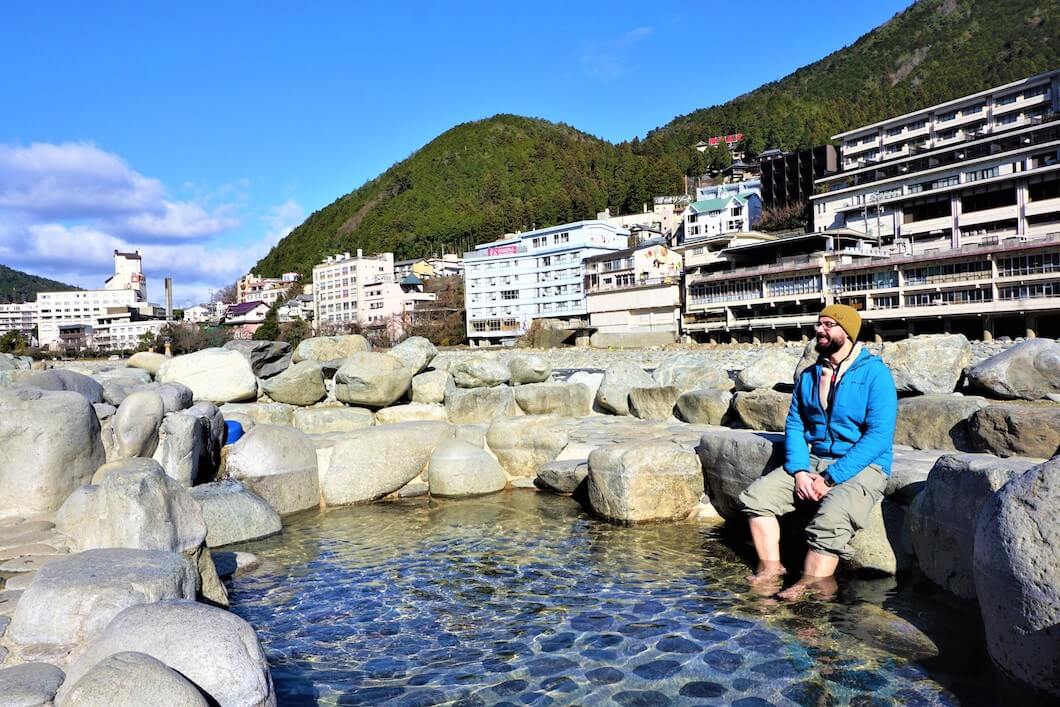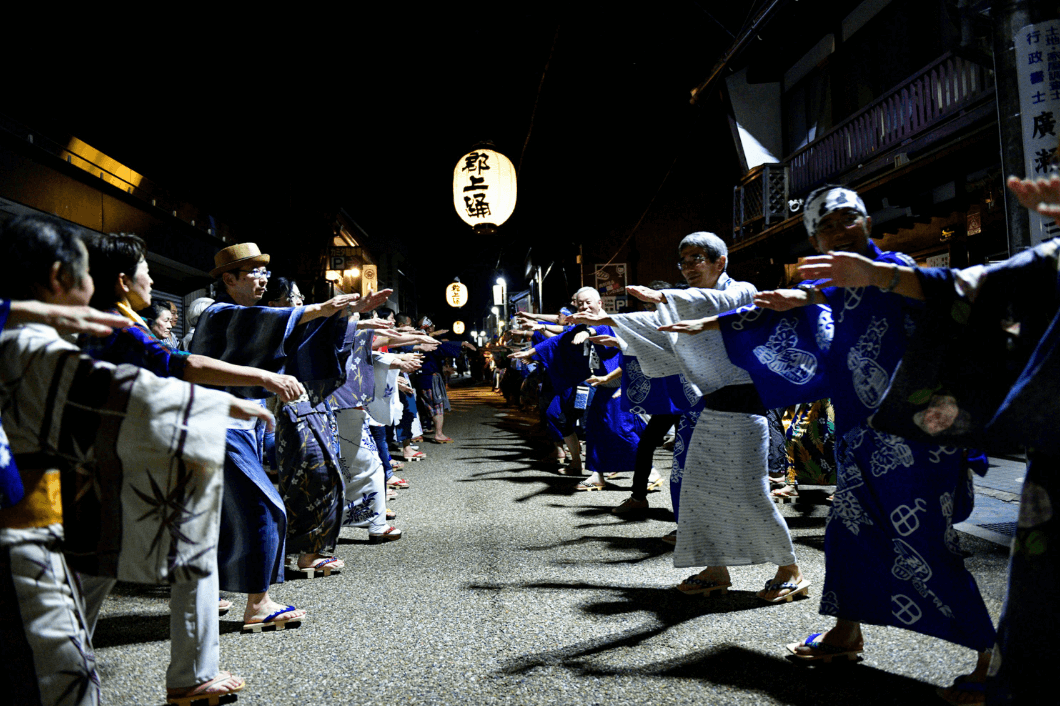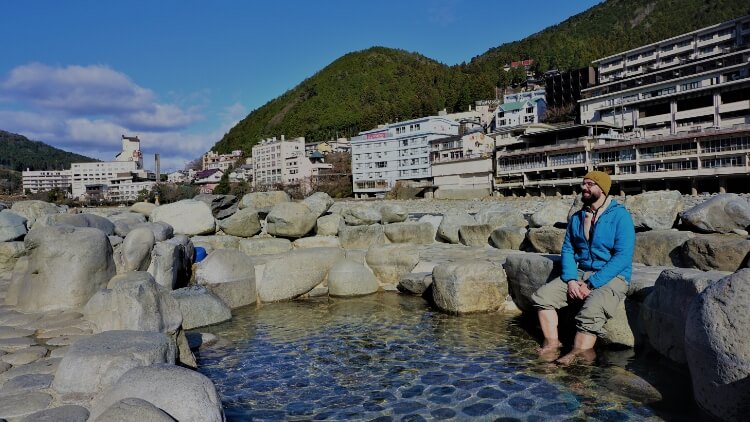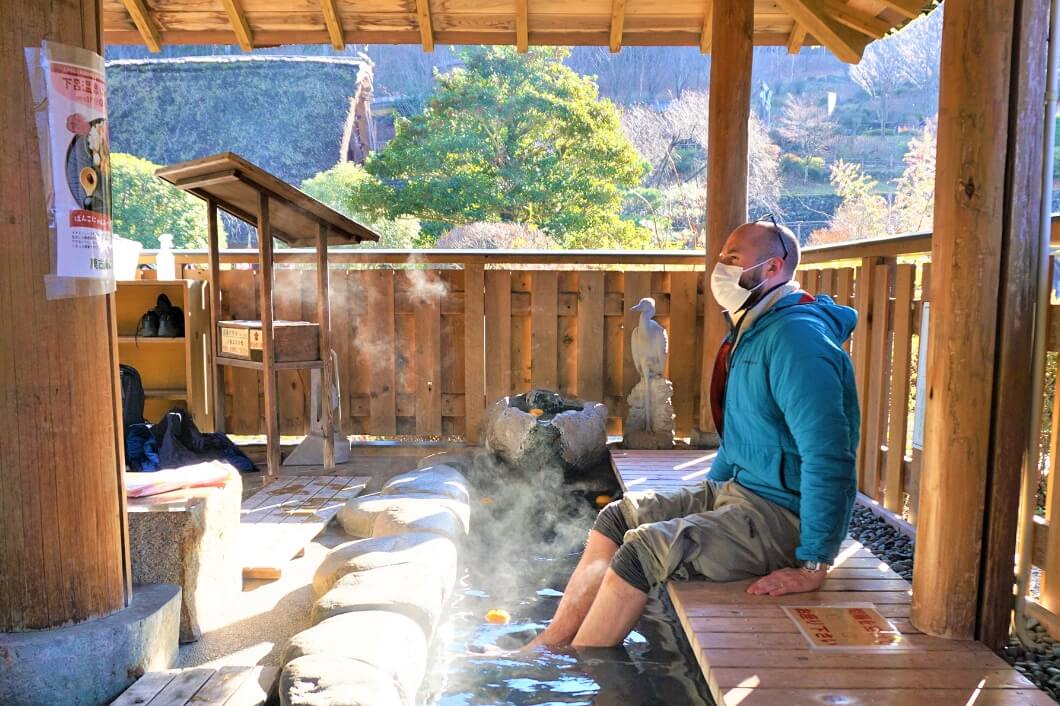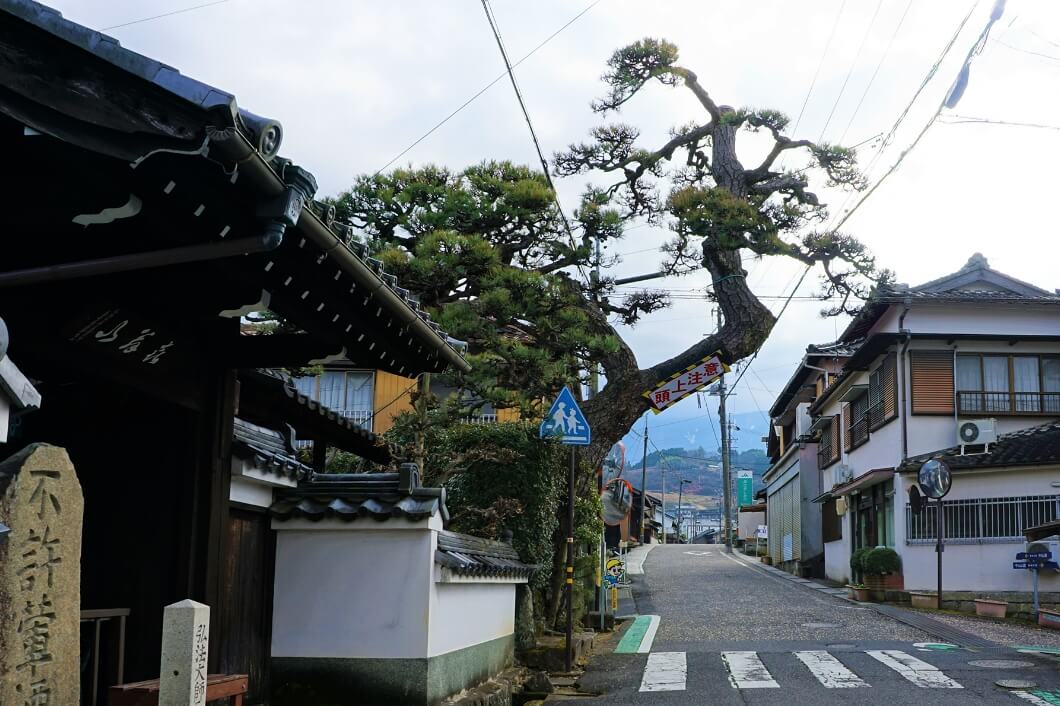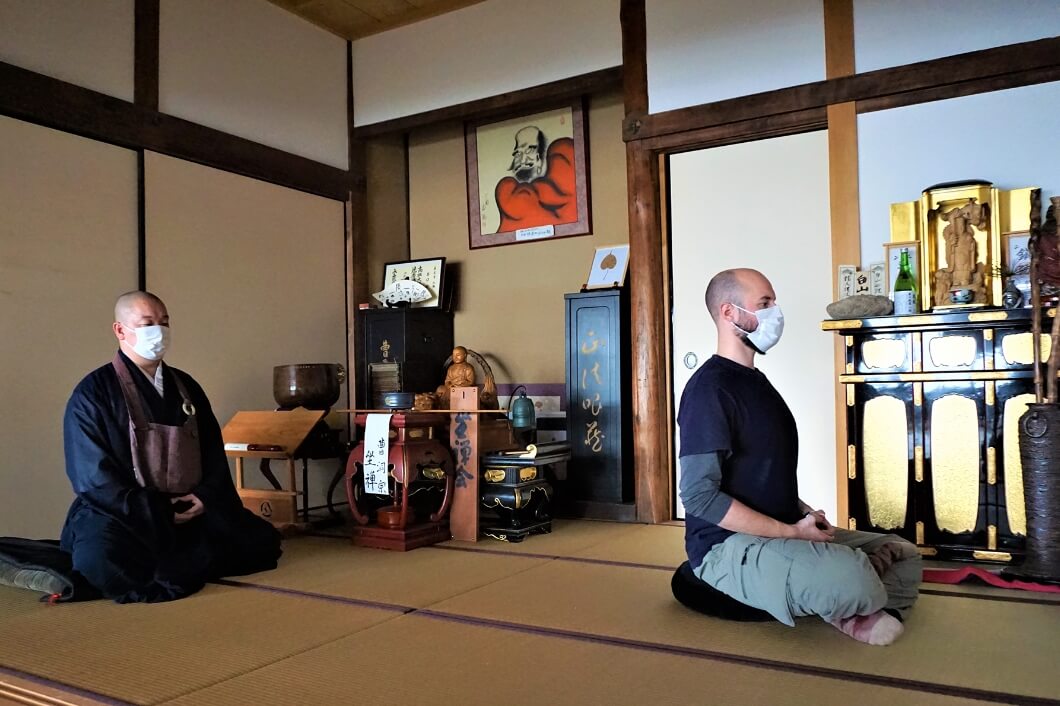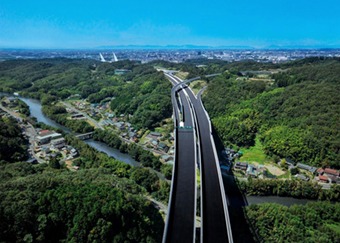Snow falls into the outdoor footbath where I'm relaxing. Above me, two birds flit through the treetops. For the first time this year, I notice that winter is already here. In Tokyo and the coastal regions of the country, we are still waiting, but here in Gero Onsen, the icy season has arrived. It is cold and I let myself slip more into the warm water of the onsen (hot spring). In the onsen, my thoughts wander and I make life decisions. What better way to do it than in the over 40-degree warm spring water, completely relaxed? Going to an onsen isn't the same as taking a soak in a Baltic Sea spa. Here you recharge your mental batteries. It is like a cleansing for the body and soul.
The city of Gero is a two-hour train ride from Nagoya, in the mountain valleys of Gifu Prefecture. We stayed in one of the largest ryokan hotels in the city, Suimeikan. The noble hotel, where even the Japanese emperor once stayed, offers an unforgettable view of the Hida River.

